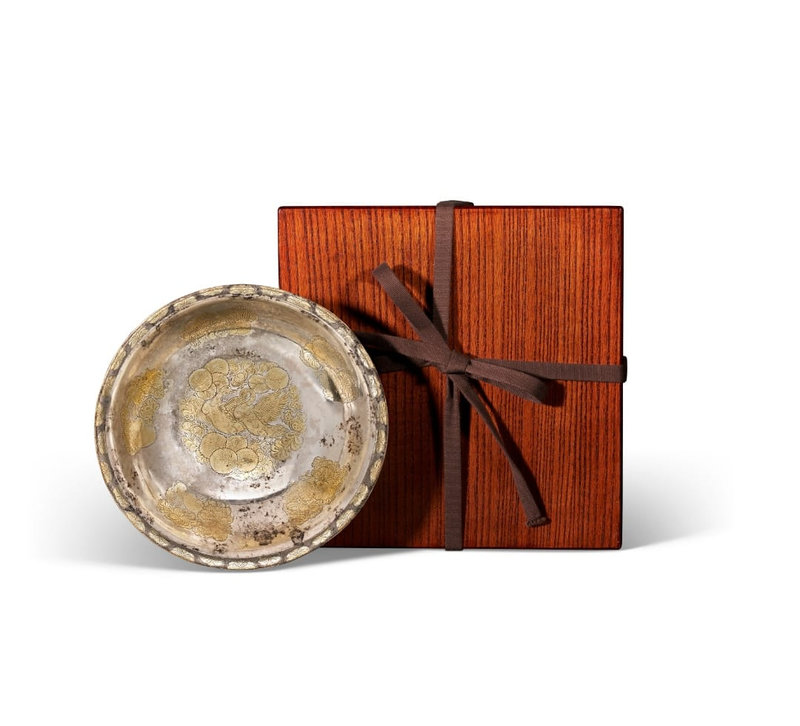An engraved parcel-gilt silver 'ducks' bowl, Tang dynasty (AD 618-907)
Lot 753. An engraved parcel-gilt silver 'ducks' bowl, Tang dynasty (AD 618-907); 8 in. (20.4 cm.) high, Japanese double wood box. Estimate USD 80,000 – USD 120,000. Price realised USD 88,200. © Christie's 2022
The bowl is raised on a circular foot and the interior is engraved with a central medallion of two ducks amidst lotus leaves and other acquatic plants below five leafy spreays in the well, all picked out in gilding. The exterior is left undecorated.
Provenance: Eurasian-Art Inc., Tokyo, 8 September 1995.
Note: The twin duck motif present on the interior of this bowl represents a loving couple living in harmony, and a happy marriage.
Compare two Tang dynasty parcel-gilt bowls of this shape, but decorated with flower blossoms and leafy stems rather than ducks, illustrated by B. Gyllensvärd in Chinese Gold & Silver in the Carl Kempe Collection, Stockholm, 1953, nos. 115 and 116, where the author notes that three bowls similar to no. 116 were found at Balin in Eastern Mongolia. Two other Tang silver bowls of this type in the collection of Pierre Uldry illustrated in Chinesisches Gold und Silber, Museum Rietberg, Zürich, 1994, nos. 147 and 148. One of the bowls in the Natanael Wessén Collection, Stockholm, was later included in the exhibition, Early Chinese art from tombs and temples, Eskenazi, London, June-July 1993, no. 32 and is now in the Miho Museum, Japan, illustrated in the Catalogue of the Miho Museum (The South Wing), 1997, no. 136. Unlike these other bowls which have two blossoming and budding leafy stems in the center and differing flower sprays on the lobes of the interior and exterior walls, the present bowl has four peony stems radiating outwards from the center, and the same flower spray repeated on the interior and exterior of each of the five lobes.
Christie's. Important Chinese Ceramics and Works of Art, New York, 25 march 2022

/https%3A%2F%2Fprofilepics.canalblog.com%2Fprofilepics%2F1%2F0%2F100183.jpg)
/https%3A%2F%2Fstorage.canalblog.com%2F03%2F02%2F119589%2F96711876_o.jpg)
/https%3A%2F%2Fstorage.canalblog.com%2F11%2F31%2F119589%2F94773502_o.jpg)
/https%3A%2F%2Fstorage.canalblog.com%2F20%2F83%2F119589%2F94772815_o.jpg)
/https%3A%2F%2Fstorage.canalblog.com%2F26%2F72%2F119589%2F75604929_o.jpg)
/https%3A%2F%2Fstorage.canalblog.com%2F59%2F60%2F119589%2F26458628_o.jpg)





/image%2F1371349%2F20240309%2Fob_203da8_265-1.jpg)
/image%2F1371349%2F20240309%2Fob_47c51d_263-1.jpg)
/http%3A%2F%2Fstorage.canalblog.com%2F81%2F54%2F119589%2F129799964_o.jpg)
/http%3A%2F%2Fstorage.canalblog.com%2F92%2F65%2F119589%2F129032256_o.jpg)